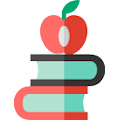
Hello!
My name is Steve Reifman, and I am a National Board Certified elementary school teacher, author, and speaker in Santa Monica, CA.
SteveReifman.com is a resource for elementary school teachers and parents. My mission is to teach the whole child—empowering students to succeed academically, build strong character, learn valuable work habits and social skills, and take charge of their health and wellness.
Begin this training process by identifying and listing all the routines, procedures, policies, and expectations your students need to learn in order to be successful learners in your classroom. The items on this list will not be glamorous, but no detail is too small. Though some items on the Training Routines list may appear trivial or unworthy of your time and some of the explanations may seem overly explicit, it’s important for students to understand your expectations unambiguously. Often we assume that our students already know how to do many of the things on this list only to discover later that we had assumed incorrectly. When it comes to routines, don’t assume that your kids have mastered anything. Save yourself the aggravation and start at square one.
I have uploaded the Training Routines List that I use into the “Classroom Resources†section of the website.
Once your list is complete, you are ready to roll. At the start of the year, as you introduce each aspect of the curriculum to your students, teach them the routines, procedures, and policies that relate to it. Taking the kids step by step through each new feature of the classroom leads to greater success, and over time, completion of the routines becomes more and more automatic.
Consistently following the steps listed below with your class routines will help you and your students get your school year off to a great start.
Training Steps
1) Introduce the new routine.
2) Discuss the importance of performing the routine correctly so students understand its purpose.
3) Explain how to perform the routine in a step-by-step manner.
4) Model the steps of the routine.
5) Hold simulation activities whenever possible to bring these routines to life.
6) Provide multiple opportunities for your students to practice the routine until it becomes second nature to them.
7) Hold students accountable for proper performance of the routine.
8) When students do not perform routines correctly, instead of telling them what they should have done, ask them if they can tell you what they should have done. Using these “think-starters†(as Madeline Hunter calls them) helps students internalize these habits.
One chapter of my book Eight Essentials for Empowered Teaching and Learning, K-8: Bringing Out the Best in Your Students focuses exclusively on the topic of training, and the ideas mentioned above are described in great detail.
Â
New Teaching Tips appear every Sunday of the school year.












